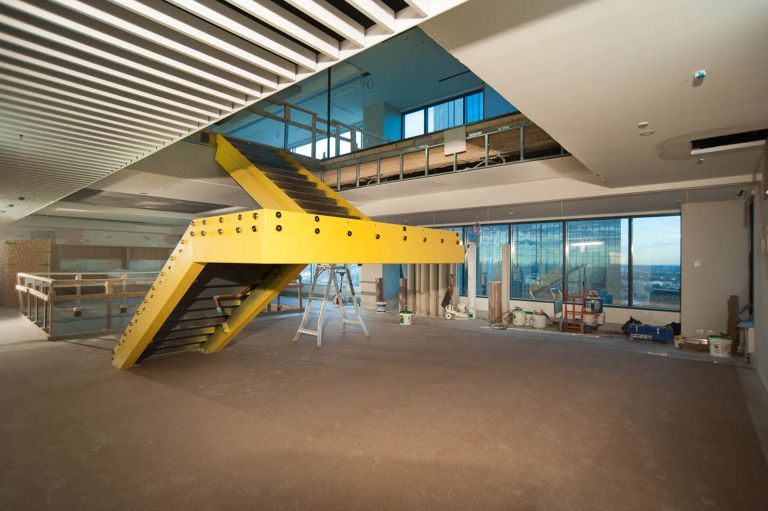
The Property Council of Australia (PCA) Guide to Office Building Quality
When it comes to gauging the performance of a finished commercial project, there are a variety of third-party rating tools which can be relied upon. Think NABERS, GreenStar and NATA for ratings around energy, waste, water and indoor air quality.
Tying in all these ratings plus many other factors, the Property Council of Australia (PCA) came up with a classification framework allowing us to benchmark the overall quality of a commercial building, contained within its Guide to Office Building Quality. The PCA first published its first guide in 2006 and has since released two updated editions, in 2012 and 2019 respectively.
Whilst it is not a rating tool per se, the guide classifies Australian office buildings based on a set of well-researched criteria and is highly regarded by investors and occupants alike.
Factors that impact building quality
Since its inception, criteria such as building age, net lettable area (NLA), location, lifts, and environmental credentials (NABERS, GreenStar ratings) have been used to determine the PCA quality gradings. Building on this, the latest release in 2019 added Indoor Environmental Quality (IEQ) to the mix; with factors such as lighting, air quality, and moisture levels also coming to the forefront.
The PCA sets certain parameters within each criterion that come together to help grade a building, starting from Premium Grade at the top, to A Grade, B Grade C Grade and Other.
Unlike rating tools accounted for within the guide - like GreenStar and NABERS - the PCA Guide is not a rating tool that publicly classifies buildings. Rather, it offers a voluntary approach to determining the extent to which a building possesses the ‘optimal mix’ of features.
Based on this 'optimal mix', both Premium and A Grade are considered the ‘pinnacle’ quality for commercial buildings. This is because fixed factors not related to the build quality itself – such as building age and location – could be what tips a project over from an A Grade to a Premium Grade in some cases.
On the other hand, criteria related to the build – such as lifts, amenities, end-of-trip (EOT) facilities, indoor air quality, and lighting – can be actively improved upon, and see a project step up from a B Grade to an A Grade classification.

Setting a project up for success
For Design & Construct projects where we are engaged in the early phases, we can work with our clients to help select the best location. Or if the location is already set, we can help assess the building and conduct the necessary due diligence for the client.
Working closely with other project consultants, we have been instrumental in helping a plethora of projects reach a Premium or A Grade classification by carrying out the necessary upgrades or incorporating the right mix of facilities into the build.
Such upgrades and additions can include EOT facilities, lift improvements, better insulation, acoustics, lighting, HVAC upgrades, amenities, and improved air quality through more indoor greenery and ventilation.
The evolution of building performance
The PCA acknowledges that changing building expectations, in accordance with our joint commitment to net zero and issues with urban resilience, continue to steer the performance demands of commercial real estate and are reflected in the guide. More sustainable modes of transport including EOT facilities seek to tackle this as well as more ecological fitout materials, energy-efficient design and thoughtful waste management.
Not to mention the effect of the evolving workplace, exacerbated by the prevalence of hybrid working and talent retention challenges. Efforts to create people-centric workplaces are evident with increased technology integration and fitouts which better facilitate activity-based working and employee wellbeing. In essence, tenants expect more than 'just an office space', and buildings which can offer this are in higher demand.
Premium and A Grade Projects

530 Collins Street

Melbourne Central

Space&Co. - Parramatta

Microsoft Technology Centre

545 Queen Street

UniSuper

The Department of Environment, Water and Natural Resources (DEWNR)
900 employees across seven locations have been united at the new DEWNR headquarters at 81 Waymouth St, Adelaide.

Aurecon
Aurecon's largely open-plan office spans three floors and is defined by the stunning timber staircase that connects them.

Level 27 Governor Macquarie Tower
Governor Macquarie Tower has reinvented itself to meet the changing demands of the commercial market, with new purpose-built offices.

ERM Power
Designed by Cox Rayner Architects, the new workplace reflects ERM Power's journey from its beginnings in 1980 to today.

Franklin Templeton
When investment firm Franklin Templeton and its subsidiary Martin Currie relocated to 120 Collins they engaged Schiavello Construction for a complete fitout and refresh.

